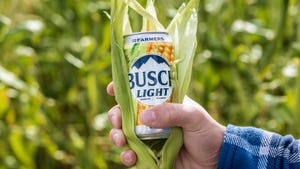Where Are All The Calves Coming From?
Depending on your perspective, May’s Cattle on Feed Report either points to the most depleted calf supply in memory, to awry USDA estimates of the beef cow and calf inventory, or to both.
May 31, 2011

Depending on your perspective, May’s Cattle on Feed Report either points to the most depleted calf supply in memory, to awry USDA estimates of the beef cow and calf inventory, or to both.
Such necessary speculation tends to occur when 10% more feedyard placements turn up, despite all other indicators suggesting the available supply of placements should be thinner than an anorexic flea.
For perspective, the May report released May 22 indicates that April placements were 10% more than a year earlier. The average Dow estimate heading into the report was 4.3% more. Cattle on feed May 1 are estimated at 7% more than last year (compared to estimates of 6.5% more) and marketings were estimated at 3% less than the previous year (compared to estimates of 3.6% less).
Heading into that report, Len Steiner and Steve Meyer said in the CME Group Daily Livestock Report that: “Should April placements hit the average 104.3% of one year ago, they would number 1.704 million head, 70,000 head more than last year. That number would be nearly 7% more placements than the 2005-2009 average for April. Perhaps more important, it would mark the twelfth time in the past 14 months in which placements would be larger than one year earlier.
“Placements during that 14-month period have been 1.45 million head more than one year earlier. Where is the ‘magic feeder cattle well’ from which these animals that USDA said were not there appearing? Yes, imports from Mexico account for about 375,000 head of that increase but imports of Canadian feeder cattle have been 76,000 head lower over that time period.”
Yet, there were April placements at more than twice-the-expected level. The 1.8 million head placed in April represents the second-highest placement rate since the series began in 1996.
“The smallest cowherd in over 60 years continues to produce eye-opening numbers of feeder cattle, which can only be rationalized through multiple births or funny math,” analysts with the Agricultural Marketing Service (AMS) explained May 22.
Though the possibility of a busted USDA abacus can’t be dismissed, there are rational explanations for where those calves came from.
For instance, AMS analysts pointed out, “…Perhaps the best explanation is that few can completely fathom just how dry the Southwest has become and the reality that there has been a huge displacement of cattle from pastures to confinement operations. Texas recently marked the driest seven-month span on record, which goes back past the Dust Bowl days and all the way back to the cattle drives of the 1800s (see "Drought-Flooding-Delays blur Outlook" elsewhere in this newsletter).
Earlier this month, Tim Petry, North Dakota State University livestock economist, offered perspective of the heavy feeder placements in a recent edition of In the Cattle Markets.
“The increased placements so far in 2011 came from several sources,” Petry explains. “Cattle placed weighing less than 700 lbs. were up over 6%, which was higher than many expected given the surge in feed prices. Extremely dry conditions in many parts of the Southern Plains forced calves to move from grazing into feedlots earlier than normal. The dry conditions extend down into Mexico as well. That, coupled with historically high prices, caused more feeder cattle imports from Mexico. For the week ended on April 23, a total of 464,535 Mexican feeder cattle had entered the US; 108,208 more than last year. Many of these feeder cattle likely went directly into U.S. feedlots rather than grazing programs due to the drought conditions.
“Furthermore, calf slaughter is down about 15% from last year, which has resulted in increased placements of dairy calves on feed. Cattle on feed on April 1 in important dairy states included Washington, which was up 23% from last year, followed by California up 8%, and Idaho up 7%.
Ron Plain, University of Missouri ag economist, noted in his Cattle Outlook last Friday, “Part of the discrepancy is due to increased imports of feeder cattle from Mexico. Placements of U.S.-born cattle were up 4.6% in 2010 and up 3.0% in the first four months of 2011. We have probably pulled ahead on placements, especially this spring given the drought in the Southern Plains. But, one has to wonder if recent calf crops were larger than originally estimated.”
Derrell Peel, Oklahoma State University Extension livestock marketing specialist, notes that calf slaughter for the nation was also down 13% in April and is 11% lower year to date.
“Though calf slaughter is minor compared to total cattle slaughter, this is one more small increment to boosting placements in the short run,” Peel explains. “One final unique contributor to larger feedlot inventories is decreases in the other-disappearance category of the Cattle on Feed report. Other disappearance occurs for several reasons but, at this time of year, it often includes some lightweight cattle that initially arrive at feedlots then return to pasture when forage conditions improve. This is happening much less this year. In fact, other disappearance has been down year over year for each of the last six months.
“Like calf slaughter, other disappearance is a minor factor but these two, combined with direct placement of Mexican feeder cattle, is indicative of the very unique situation and the intensity with which feeder markets are beating the bushes to find feeder cattle supplies.”
About the Author(s)
You May Also Like



.png?width=300&auto=webp&quality=80&disable=upscale)

